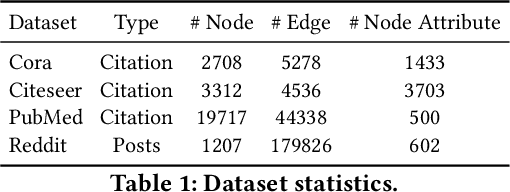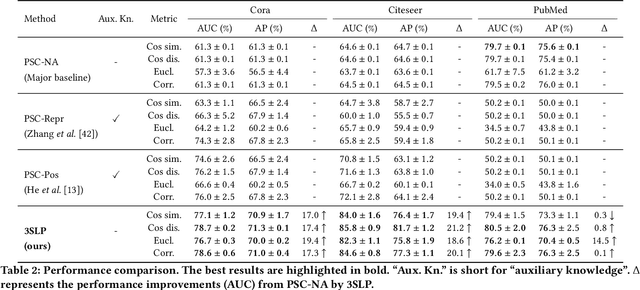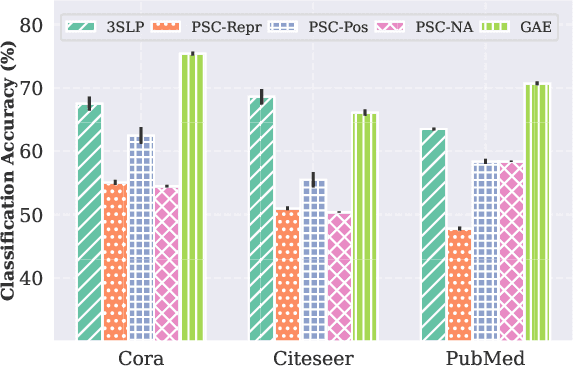An Liu
MT-PCR: A Hybrid Mamba-Transformer with Spatial Serialization for Hierarchical Point Cloud Registration
Jun 16, 2025Abstract:Point cloud registration (PCR) is a fundamental task in 3D computer vision and robotics. Most existing learning-based PCR methods rely on Transformers, which suffer from quadratic computational complexity. This limitation restricts the resolution of point clouds that can be processed, inevitably leading to information loss. In contrast, Mamba-a recently proposed model based on state space models (SSMs)-achieves linear computational complexity while maintaining strong long-range contextual modeling capabilities. However, directly applying Mamba to PCR tasks yields suboptimal performance due to the unordered and irregular nature of point cloud data. To address this challenge, we propose MT-PCR, the first point cloud registration framework that integrates both Mamba and Transformer modules. Specifically, we serialize point cloud features using Z-order space-filling curves to enforce spatial locality, enabling Mamba to better model the geometric structure of the input. Additionally, we remove the order indicator module commonly used in Mamba-based sequence modeling, leads to improved performance in our setting. The serialized features are then processed by an optimized Mamba encoder, followed by a Transformer refinement stage. Extensive experiments on multiple benchmarks demonstrate that MT-PCR outperforms Transformer-based and concurrent state-of-the-art methods in both accuracy and efficiency, significantly reducing while GPU memory usage and FLOPs.
LiloDriver: A Lifelong Learning Framework for Closed-loop Motion Planning in Long-tail Autonomous Driving Scenarios
May 22, 2025Abstract:Recent advances in autonomous driving research towards motion planners that are robust, safe, and adaptive. However, existing rule-based and data-driven planners lack adaptability to long-tail scenarios, while knowledge-driven methods offer strong reasoning but face challenges in representation, control, and real-world evaluation. To address these challenges, we present LiloDriver, a lifelong learning framework for closed-loop motion planning in long-tail autonomous driving scenarios. By integrating large language models (LLMs) with a memory-augmented planner generation system, LiloDriver continuously adapts to new scenarios without retraining. It features a four-stage architecture including perception, scene encoding, memory-based strategy refinement, and LLM-guided reasoning. Evaluated on the nuPlan benchmark, LiloDriver achieves superior performance in both common and rare driving scenarios, outperforming static rule-based and learning-based planners. Our results highlight the effectiveness of combining structured memory and LLM reasoning to enable scalable, human-like motion planning in real-world autonomous driving. Our code is available at https://github.com/Hyan-Yao/LiloDriver.
Bounded and Uniform Energy-based Out-of-distribution Detection for Graphs
Apr 18, 2025Abstract:Given the critical role of graphs in real-world applications and their high-security requirements, improving the ability of graph neural networks (GNNs) to detect out-of-distribution (OOD) data is an urgent research problem. The recent work GNNSAFE proposes a framework based on the aggregation of negative energy scores that significantly improves the performance of GNNs to detect node-level OOD data. However, our study finds that score aggregation among nodes is susceptible to extreme values due to the unboundedness of the negative energy scores and logit shifts, which severely limits the accuracy of GNNs in detecting node-level OOD data. In this paper, we propose NODESAFE: reducing the generation of extreme scores of nodes by adding two optimization terms that make the negative energy scores bounded and mitigate the logit shift. Experimental results show that our approach dramatically improves the ability of GNNs to detect OOD data at the node level, e.g., in detecting OOD data induced by Structure Manipulation, the metric of FPR95 (lower is better) in scenarios without (with) OOD data exposure are reduced from the current SOTA by 28.4% (22.7%).
Two-Timescale Joint Transmit and Pinching Beamforming for Pinching-Antenna Systems
Apr 13, 2025Abstract:Pinching antenna systems (PASS) have been proposed as a revolutionary flexible antenna technology which facilitates line-of-sight links via numerous low-cost pinching antennas with adjustable activation positions over waveguides. This letter proposes a two-timescale joint transmit and pinching beamforming design for the maximization of sum rate of a PASS-based downlink multi-user multiple input single output system. A primal dual decomposition method is developed to decouple the two-timescale problem into two sub-problems: 1) A Karush-Kuhn-Tucker-guided dual learning-based approach is proposed to solve the short-term transmit beamforming design sub-problem; 2) The long-term pinching beamforming design sub-problem is tackled by adopting a stochastic successive convex approximation method. Simulation results demonstrate that the proposed two-timescale algorithm achieves a significant performance gain compared to other baselines.
Context-aware Constrained Reinforcement Learning Based Energy-Efficient Power Scheduling for Non-stationary XR Data Traffic
Mar 12, 2025Abstract:In XR downlink transmission, energy-efficient power scheduling (EEPS) is essential for conserving power resource while delivering large data packets within hard-latency constraints. Traditional constrained reinforcement learning (CRL) algorithms show promise in EEPS but still struggle with non-convex stochastic constraints, non-stationary data traffic, and sparse delayed packet dropout feedback (rewards) in XR. To overcome these challenges, this paper models the EEPS in XR as a dynamic parameter-constrained Markov decision process (DP-CMDP) with a varying transition function linked to the non-stationary data traffic and solves it by a proposed context-aware constrained reinforcement learning (CACRL) algorithm, which consists of a context inference (CI) module and a CRL module. The CI module trains an encoder and multiple potential networks to characterize the current transition function and reshape the packet dropout rewards according to the context, transforming the original DP-CMDP into a general CMDP with immediate dense rewards. The CRL module employs a policy network to make EEPS decisions under this CMDP and optimizes the policy using a constrained stochastic successive convex approximation (CSSCA) method, which is better suited for non-convex stochastic constraints. Finally, theoretical analyses provide deep insights into the CADAC algorithm, while extensive simulations demonstrate that it outperforms advanced baselines in both power conservation and satisfying packet dropout constraints.
Multi-model Stochastic Particle-based Variational Bayesian Inference for Multiband Delay Estimation
Feb 28, 2025Abstract:Joint utilization of multiple discrete frequency bands can enhance the accuracy of delay estimation. Although some unique challenges of multiband fusion, such as phase distortion, oscillation phenomena, and high-dimensional search, have been partially addressed, further challenges remain. Specifically, under conditions of low signal-to-noise ratio (SNR), insufficient data, and closely spaced delay paths, accurately determining the model order-the number of delay paths-becomes difficult. Misestimating the model order can significantly degrade the estimation performance of traditional methods. To address joint model selection and parameter estimation under such harsh conditions, we propose a multi-model stochastic particle-based variational Bayesian inference (MM-SPVBI) framework, capable of exploring multiple high-dimensional parameter spaces. Initially, we split potential overlapping primary delay paths based on coarse estimates, generating several parallel candidate models. Then, an auto-focusing sampling strategy is employed to quickly identify the optimal model. Additionally, we introduce a hybrid posterior approximation to improve the original single-model SPVBI, ensuring overall complexity does not increase significantly with parallelism. Simulations demonstrate that our algorithm offers substantial advantages over existing methods.
TAPE: Tailored Posterior Difference for Auditing of Machine Unlearning
Feb 27, 2025Abstract:With the increasing prevalence of Web-based platforms handling vast amounts of user data, machine unlearning has emerged as a crucial mechanism to uphold users' right to be forgotten, enabling individuals to request the removal of their specified data from trained models. However, the auditing of machine unlearning processes remains significantly underexplored. Although some existing methods offer unlearning auditing by leveraging backdoors, these backdoor-based approaches are inefficient and impractical, as they necessitate involvement in the initial model training process to embed the backdoors. In this paper, we propose a TAilored Posterior diffErence (TAPE) method to provide unlearning auditing independently of original model training. We observe that the process of machine unlearning inherently introduces changes in the model, which contains information related to the erased data. TAPE leverages unlearning model differences to assess how much information has been removed through the unlearning operation. Firstly, TAPE mimics the unlearned posterior differences by quickly building unlearned shadow models based on first-order influence estimation. Secondly, we train a Reconstructor model to extract and evaluate the private information of the unlearned posterior differences to audit unlearning. Existing privacy reconstructing methods based on posterior differences are only feasible for model updates of a single sample. To enable the reconstruction effective for multi-sample unlearning requests, we propose two strategies, unlearned data perturbation and unlearned influence-based division, to augment the posterior difference. Extensive experimental results indicate the significant superiority of TAPE over the state-of-the-art unlearning verification methods, at least 4.5$\times$ efficiency speedup and supporting the auditing for broader unlearning scenarios.
Bilinear Subspace Variational Bayesian Inference for Joint Scattering Environment Sensing and Data Recovery in ISAC Systems
Feb 02, 2025Abstract:This paper considers a joint scattering environment sensing and data recovery problem in an uplink integrated sensing and communication (ISAC) system. To facilitate joint scatterers localization and multi-user (MU) channel estimation, we introduce a three-dimensional (3D) location-domain sparse channel model to capture the joint sparsity of the MU channel (i.e., different user channels share partially overlapped scatterers). Then the joint problem is formulated as a bilinear structured sparse recovery problem with a dynamic position grid and imperfect parameters (such as time offset and user position errors). We propose an expectation maximization based turbo bilinear subspace variational Bayesian inference (EM-Turbo-BiSVBI) algorithm to solve the problem effectively, where the E-step performs Bayesian estimation of the the location-domain sparse MU channel by exploiting the joint sparsity, and the M-step refines the dynamic position grid and learns the imperfect factors via gradient update. Two methods are introduced to greatly reduce the complexity with almost no sacrifice on the performance and convergence speed: 1) a subspace constrained bilinear variational Bayesian inference (VBI) method is proposed to avoid any high-dimensional matrix inverse; 2) the multiple signal classification (MUSIC) and subspace constrained VBI methods are combined to obtain a coarse estimation result to reduce the search range. Simulations verify the advantages of the proposed scheme over baseline schemes.
Scattering Environment Aware Joint Multi-user Channel Estimation and Localization with Spatially Reused Pilots
Jan 04, 2025Abstract:The increasing number of users leads to an increase in pilot overhead, and the limited pilot resources make it challenging to support all users using orthogonal pilots. By fully capturing the inherent physical characteristics of the multi-user (MU) environment, it is possible to reduce pilot costs and improve the channel estimation performance. In reality, users nearby may share the same scatterer, while users further apart tend to have orthogonal channels. This paper proposes a two-timescale approach for joint MU uplink channel estimation and localization in MIMO-OFDM systems, which fully captures the spatial characteristics of MUs. To accurately represent the structure of the MU channel, the channel is modeled in the 3-D location domain. In the long-timescale phase, the time-space-time multiple signal classification (TST-MUSIC) algorithm initially offers a rough approximation of scatterer positions for each user, which is subsequently refined through the scatterer association algorithm based on density-based spatial clustering of applications with noise (DBSCAN) algorithm. The BS then utilizes this prior information to apply a graph-coloring-based user grouping algorithm, enabling spatial division multiplexing of pilots and reducing pilot overhead. In the short timescale phase, a low-complexity scattering environment aware location-domain turbo channel estimation (SEA-LD-TurboCE) algorithm is introduced to merge the overlapping scatterer information from MUs, facilitating high-precision joint MU channel estimation and localization under spatially reused pilots. Simulation results verify the superior channel estimation and localization performance of our proposed scheme over the baselines.
Can Self Supervision Rejuvenate Similarity-Based Link Prediction?
Oct 24, 2024



Abstract:Although recent advancements in end-to-end learning-based link prediction (LP) methods have shown remarkable capabilities, the significance of traditional similarity-based LP methods persists in unsupervised scenarios where there are no known link labels. However, the selection of node features for similarity computation in similarity-based LP can be challenging. Less informative node features can result in suboptimal LP performance. To address these challenges, we integrate self-supervised graph learning techniques into similarity-based LP and propose a novel method: Self-Supervised Similarity-based LP (3SLP). 3SLP is suitable for the unsupervised condition of similarity-based LP without the assistance of known link labels. Specifically, 3SLP introduces a dual-view contrastive node representation learning (DCNRL) with crafted data augmentation and node representation learning. DCNRL is dedicated to developing more informative node representations, replacing the node attributes as inputs in the similarity-based LP backbone. Extensive experiments over benchmark datasets demonstrate the salient improvement of 3SLP, outperforming the baseline of traditional similarity-based LP by up to 21.2% (AUC).
 Add to Chrome
Add to Chrome Add to Firefox
Add to Firefox Add to Edge
Add to Edge